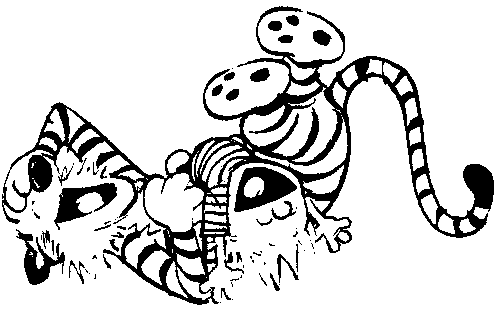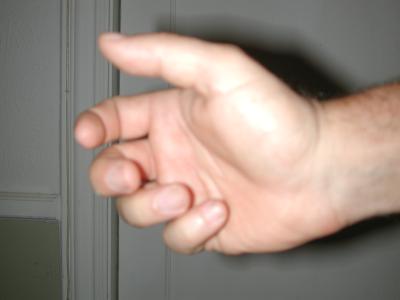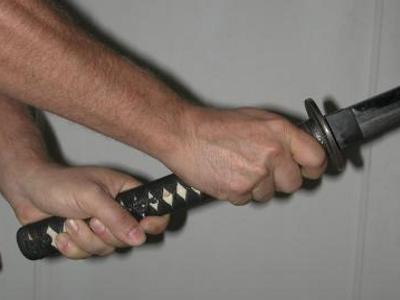Blocking
/At the technique-level circular movements are often used to simultaneously re-direct and strike. These moves are in a sense blocks even if they are also strikes.
But when I was ten years old and started learning Springy-Legs, Tantui (Northern Shaolin), I had to develop solid stances. A good way to test six harmonies power in each stance is to see if the student can keep their arm up while you take a swing at them. Beginning students should pass through a blocking-techniques stage of practice. Good blocking skills can help with integration, structure and relaxation.
I went to a middle school (age 11-13) where kids wore razor-blades on chains around their necks. It was a sweet time. The Latino gangs were the most dangerous, but I was on the inside of that by the middle of my second year. Some of the taller black kids were under a lot of pressure to prove themselves
At the end of the P.E. (Physical Education) period we went into the locker room to change out of our P.E. uniforms and back into our street clothes. The locker aisles were exquisitely dangerous, we all learned to change in under 20 seconds. But the time alotted for changing was more like 10 minutes so about 50 of us would cram into this space with the lockers to our backs and the doors to freedom in front of us for 9 minutes and 40 seconds.
This wide hallway had a red line that split the room in half. O.J. Simpson went to my Middle-School and his first-place time in Track was on the top of the board in this very hallway. On one half of the hallway were the doors to freedom and a gym teacher, on the other half all of us, crammed together. We were all wearing backpacks which served as a little bit of spine protection. The taller black kids would practice punching everyone else. If you kicked or punched back, the possibility of major escalation was high. The best strategy was to block the punches.
I did not advertise my Shaolin training, however those blocking skills proved to be pretty handy, and earned me some "respect."
Blocking skills should be discarded if you want to develop higher level, non-defensive, skills. Still they have a place.


 Chinese internal arts are very different than Yoga. The biggest difference is that Yoga breathing is in unison with the movement. In Chinese internal arts our breathing is natural. In fact, if you have taught yourself to breath in unison with the movement, you have to un-teach yourself. The stronger your yoga practice is, the more you'll feel your breathing get stuck in a pattern.
Chinese internal arts are very different than Yoga. The biggest difference is that Yoga breathing is in unison with the movement. In Chinese internal arts our breathing is natural. In fact, if you have taught yourself to breath in unison with the movement, you have to un-teach yourself. The stronger your yoga practice is, the more you'll feel your breathing get stuck in a pattern. I stopped at a gas station in the middle of nowhere on the way to the mountains last month. I checked the oil and it was pretty low so I bought a couple of quarts. I worked in a gas station when I was 14 so I know some tricks for getting a good grip, but my engine was really hot and the oil cap wouldn't budge. I went looking around in my trunk for someway to get more leverage and came up empty. I felt my manhood was being challenged. Just then a thick stocky man, about 6 inches shorter than me said, "Can I give you a hand." I'm sure I looked embarrassed but then I looked at his hands and they were clearly twice the size of mine, his fingers were as thick as cigars. "Sure, uhh...thanks" I said, and he unscrewed it. I asked where he got such huge hands and he said it was his Scottish ancestry.
I stopped at a gas station in the middle of nowhere on the way to the mountains last month. I checked the oil and it was pretty low so I bought a couple of quarts. I worked in a gas station when I was 14 so I know some tricks for getting a good grip, but my engine was really hot and the oil cap wouldn't budge. I went looking around in my trunk for someway to get more leverage and came up empty. I felt my manhood was being challenged. Just then a thick stocky man, about 6 inches shorter than me said, "Can I give you a hand." I'm sure I looked embarrassed but then I looked at his hands and they were clearly twice the size of mine, his fingers were as thick as cigars. "Sure, uhh...thanks" I said, and he unscrewed it. I asked where he got such huge hands and he said it was his Scottish ancestry.


 hand doesn't usually close.
hand doesn't usually close. is painful to hold a solid, tightly packed fist for five minutes unless your technique is good. If it hurts, it is wrong (the spirits have left the body.)
is painful to hold a solid, tightly packed fist for five minutes unless your technique is good. If it hurts, it is wrong (the spirits have left the body.) It seems that all the big sports stars are wearing compression bands or straps. Why?
It seems that all the big sports stars are wearing compression bands or straps. Why?

 Taping is sometimes a good way to deal with injuries. I haven't tried
Taping is sometimes a good way to deal with injuries. I haven't tried  a better idea. When an injury occurs it is usually important to reduce the student's range of motion while simultaneously increasing circulation and sensitivity. Building muscle usually causes inflammation, loss of sensitivity and inhibits circulation.
a better idea. When an injury occurs it is usually important to reduce the student's range of motion while simultaneously increasing circulation and sensitivity. Building muscle usually causes inflammation, loss of sensitivity and inhibits circulation. Each culture has totally different standards and conceptions about what constitutes clean. Last year the New Yorker had some pictures of people living in a garbage dump in Nigeria. They were wearing bright beautiful clothing and looked cleaner than I do. Japanese are incredibly clean, I've watched men in public baths scrub their entire bodies as many as eight times before getting in the bath to soak. Yet I've seen rural places where Japanese will toss trash on the ground.
Each culture has totally different standards and conceptions about what constitutes clean. Last year the New Yorker had some pictures of people living in a garbage dump in Nigeria. They were wearing bright beautiful clothing and looked cleaner than I do. Japanese are incredibly clean, I've watched men in public baths scrub their entire bodies as many as eight times before getting in the bath to soak. Yet I've seen rural places where Japanese will toss trash on the ground. At the end of summer Daoists eat foods which cool blood to release any trapped summer heat before starting the tonification process leading into winter. This bean-thread noodle recipe by Daoist priest
At the end of summer Daoists eat foods which cool blood to release any trapped summer heat before starting the tonification process leading into winter. This bean-thread noodle recipe by Daoist priest  boiling water for 30 seconds
boiling water for 30 seconds Still, I developed the ability to see and correct alignment problems, and to spontaneously create simple exercises that release tension and increase mobility in joints. This ability is a kind of intuition.
Still, I developed the ability to see and correct alignment problems, and to spontaneously create simple exercises that release tension and increase mobility in joints. This ability is a kind of intuition. The ninth precept, yielding to others, is wuwei. The first precept probably works better in English as "Be Honest." The second precept is often the tough one for people. The flexibility part sounds cool, but the weakness part is confusing. Here is what
The ninth precept, yielding to others, is wuwei. The first precept probably works better in English as "Be Honest." The second precept is often the tough one for people. The flexibility part sounds cool, but the weakness part is confusing. Here is what